As promised, I made a series of measurements to evaluate the efficiency of the Buck-Boost (TPS63070) FeatherWing. It took some time to put together a stable and well-calibrated automatic measuring rig. Here is a picture of the latest setup:
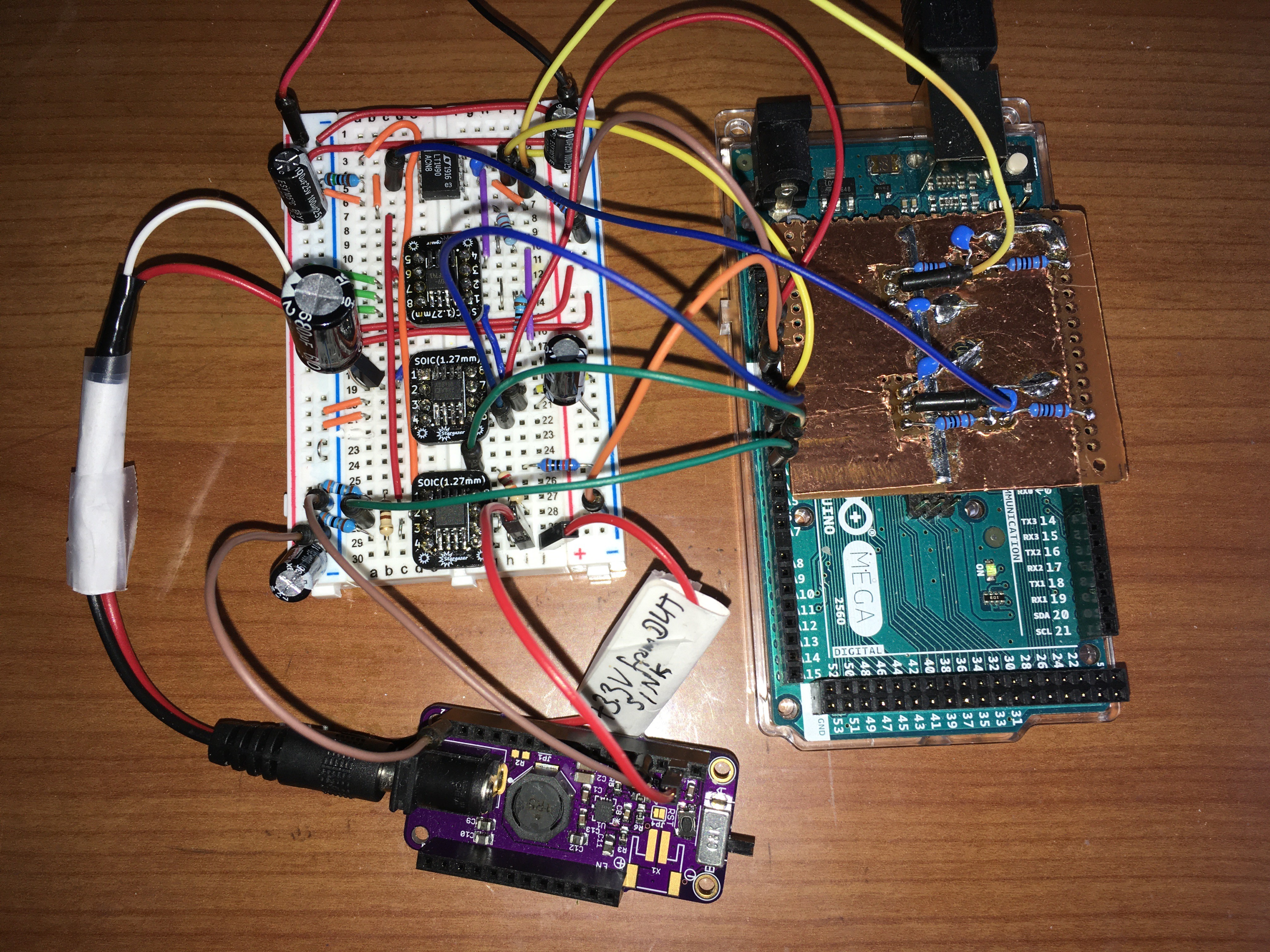 This fixture uses an Arduino Mega as a controller, only because my Arduino UNO was fried. I have some breadboard analog electronics to supply an input voltage and an output sink current to the device-under-test (DUT) under control of filtered PWM outputs from the Mega. Then I use the Mega's analog inputs to read the DUT's input current and output voltage. The program can do a sweep over ranges of voltage and current and report the results in a table. The power supply for the test fixture is a cheap unregulated 15-volt AC-DC wall-wart. I can supply more details if requested.
This fixture uses an Arduino Mega as a controller, only because my Arduino UNO was fried. I have some breadboard analog electronics to supply an input voltage and an output sink current to the device-under-test (DUT) under control of filtered PWM outputs from the Mega. Then I use the Mega's analog inputs to read the DUT's input current and output voltage. The program can do a sweep over ranges of voltage and current and report the results in a table. The power supply for the test fixture is a cheap unregulated 15-volt AC-DC wall-wart. I can supply more details if requested. At this point, I should explain that I have actually built 2 revisions of this design; the main difference is that for Rev 1, I have removed a series Schottky diode that Rev 0 has at the supply input; I also improved the layout to provide wider traces. Both of these changes were intended to improve the efficiency,
Recall also that this device can be operated under two modes (see datasheet for the TPS63070): PWM mode is more efficient at higher power; but power-save mode provides much better efficiency with low output currents. In my design, power-save mode is the default, as I expect most applications will be in the <100mA range.
The charts below plot the efficiency of the converter against the output current, with several values of input voltage tested. The switcher's output voltage is fixed at 3.4V.
Rev 0 design, in power-save mode:
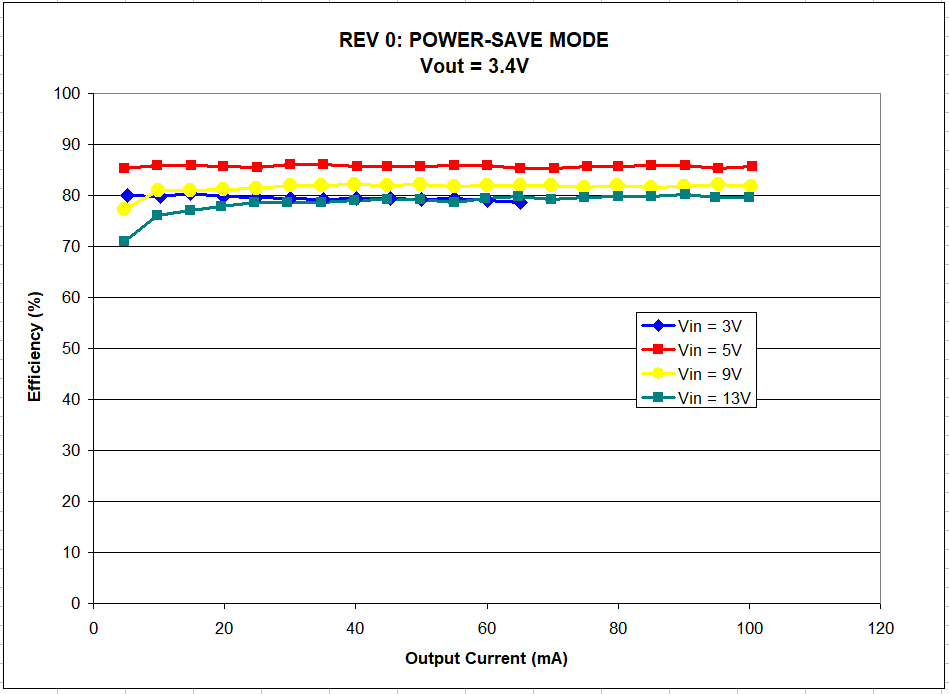 The improved Rev 1 design is also shown in power-save mode. Note the efficiency improvement, and that the device can be operated down to about 10mA without any dropoff in efficiency:
The improved Rev 1 design is also shown in power-save mode. Note the efficiency improvement, and that the device can be operated down to about 10mA without any dropoff in efficiency: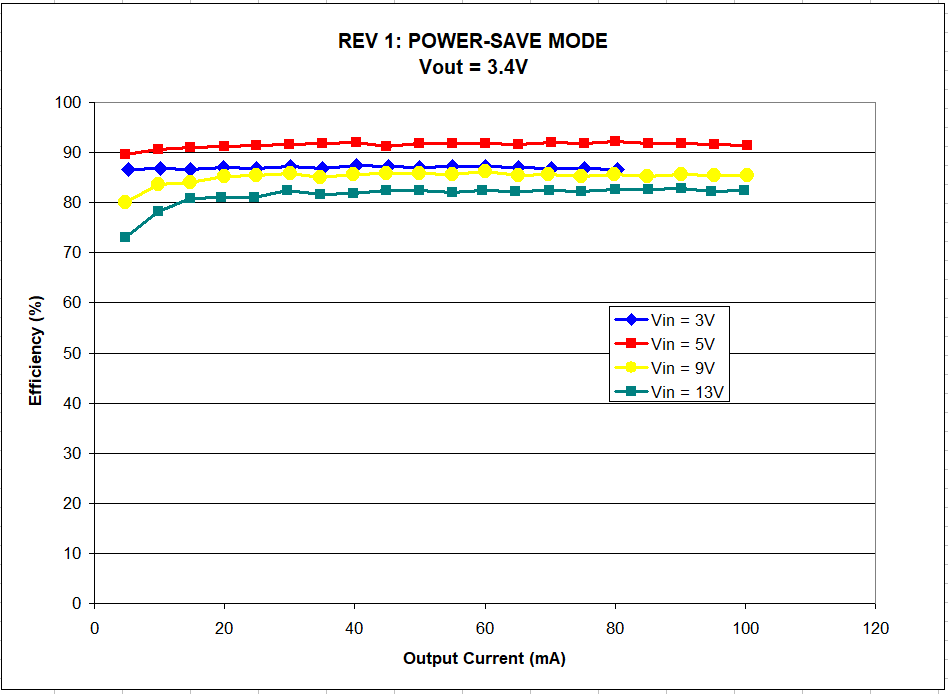 For comparison, here is the result of testing a Rev 0 board in PWM mode; my fixture is limited to 100mA input or output current, but you can see that the peak efficiency now does not happen in this range:
For comparison, here is the result of testing a Rev 0 board in PWM mode; my fixture is limited to 100mA input or output current, but you can see that the peak efficiency now does not happen in this range: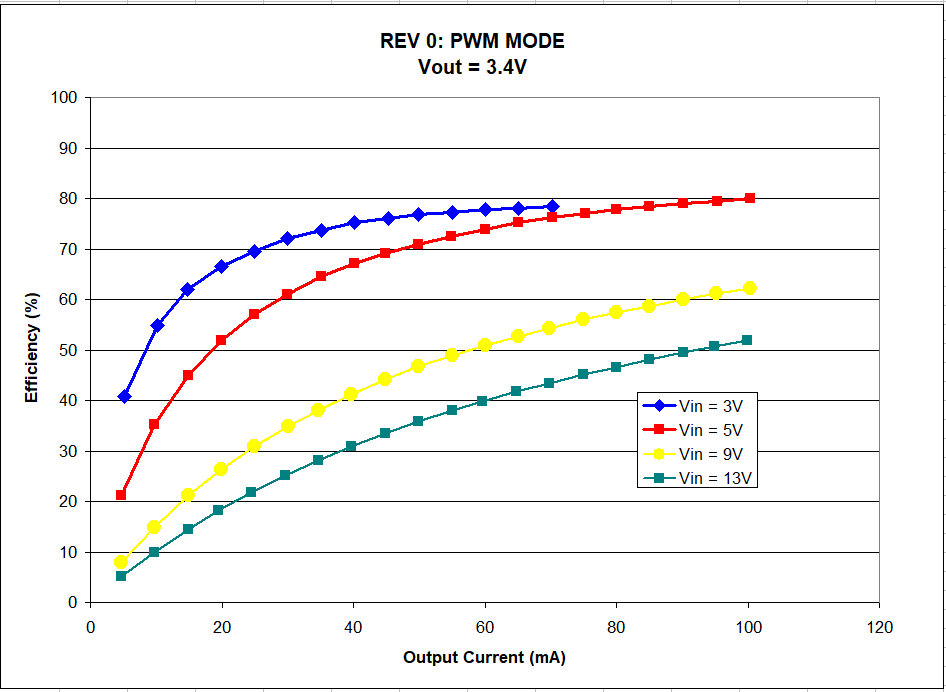 For comparison, I will also show a couple of charts from the datasheet, although the examples show the device operating with 5-V output. The efficiency in power-save mode:
For comparison, I will also show a couple of charts from the datasheet, although the examples show the device operating with 5-V output. The efficiency in power-save mode: And the efficiency in PWM mode; note that the peak efficiency is slightly higher than that of the power-save mode, but not until output current reaches a few hundred mA:
And the efficiency in PWM mode; note that the peak efficiency is slightly higher than that of the power-save mode, but not until output current reaches a few hundred mA: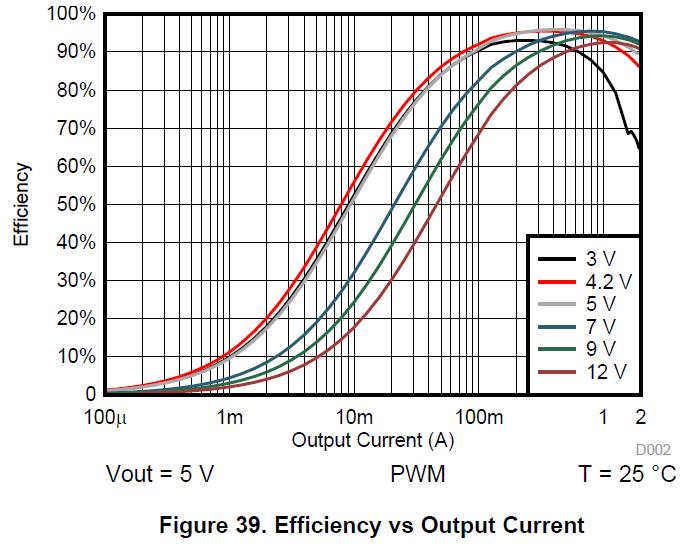
 David Wilson
David Wilson
Discussions
Become a Hackaday.io Member
Create an account to leave a comment. Already have an account? Log In.